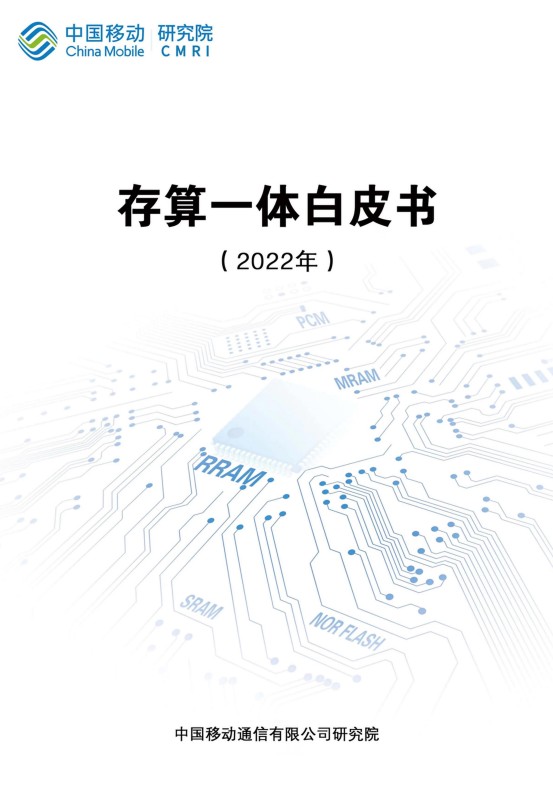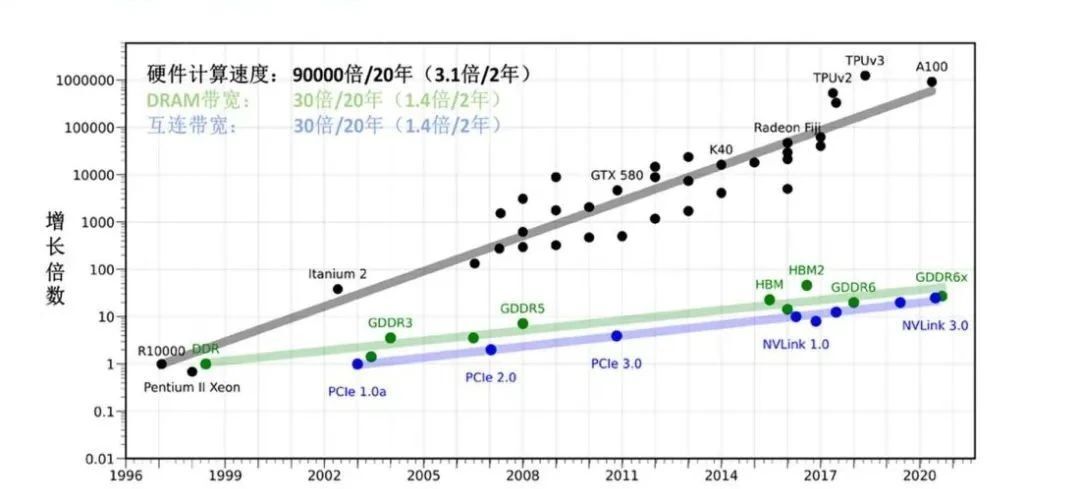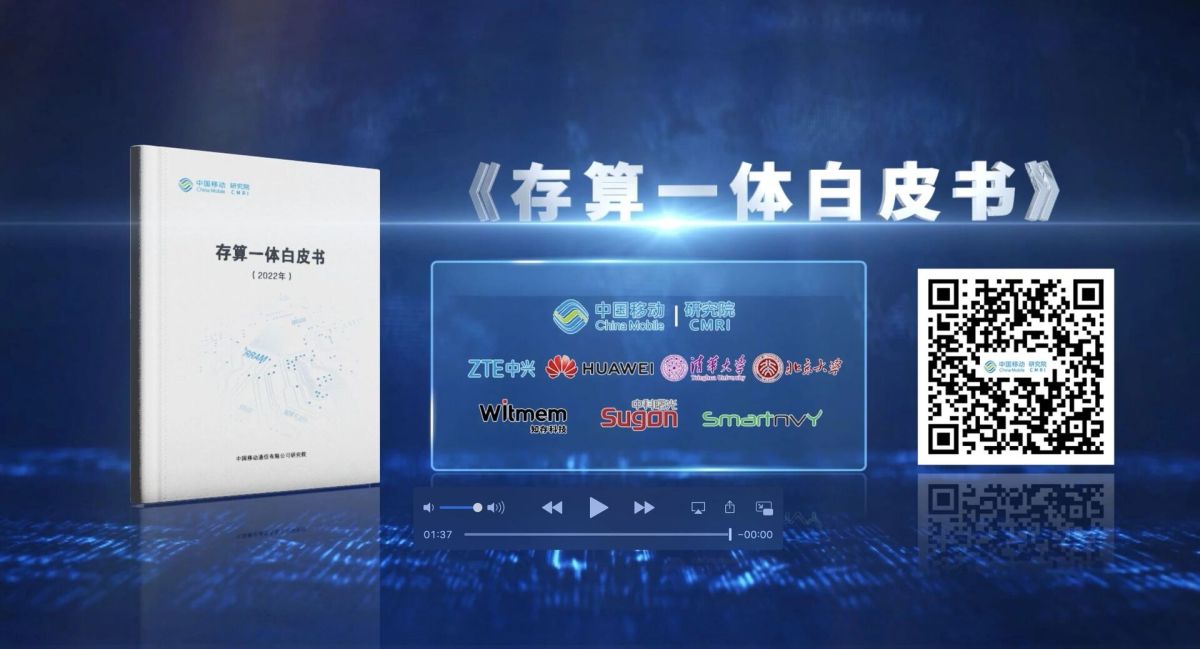The first White Paper on " Computing in Memory" is authoritatively released
On December 11, 2022, the China Mobile Global Partner Conference held the "China Mobile Industry Chain Innovation and Arithmetic Network Sub-Forum," it focused on chain innovation, a joint creation of the future, and the era of arithmetic. It shows the ecology of industry chain integration, group breakthrough achievements, and the effectiveness of arithmetic network innovation. Among them, the industry's first "White Paper on Computing in Memory. Integration," jointly released by various units of industry, academia, and research, has attracted intense attention and will become an authoritative treasure book to guide all sectors of industry, academia, and research to standardize their understanding of computing in-memory integration and its development.

·CMCC, ZTE Corporation, Huawei Technologies, Tsinghua University, Peking University, and Beijing Witmem Technology Co jointly prepared the White Paper. The book explains the core technology, development route, application scenarios, and industry chain ecology of Computing in memory integration.
It promotes consensus building, cooperation, and collaboration among industry, academia, and research institutes. It encourages the maturation of computing in-memory technology and ecological prosperity to accelerate the industrialization of storage and Computing and to help China achieve a high level of self-sufficiency and self-improvement in Advanced Computing.
Since the launch of the white paper in April 2022, Cognizant Technology, together with experts from industry and academia, has been revising the essay after more than half a year of repeated exchanges, writing, and discussions. In the book, we have summarized and collated our experience and insights into storage and computing industrialization. In promoting the standardization and standardization of the industry, Centric has also gained a clearer vision of its corporate development goals and objectives. The White Paper is a summary of the contents of the White Paper for readers to have a quick preview.
Computing in memory is a representative technology of advanced computing power.

·The core of Computing in memory is the complete integration of Computing and Storage. It effectively overcomes the bottleneck of the von Neumann architecture. It combines it with advanced packaging and new memory devices in the post-Moore era to achieve an order-of-magnitude improvement in computing power efficiency.
The proposed technology path for storage and computing integration
The white paper categorizes generalized Computing in-memory technologies to reach a broad consensus. Based on the proximity of storage and computation, the technology solutions divided into three broad categories: Processing Near Memory (PNM), Processing In Memory (PIM), and Computing in Memory (CIM). CIM is defined as memory in computing. In the chip design process, the distinction between storage and computation units is no longer existed, and the proper integration of storage and analysis achieved.
The white paper describes and compares the five main types of memory devices and their in-store Computing: static random memory (SRAM), NOR Flash, resistive random memory (RRAM), magnetic random memory (MRAM), and phase change memory (PCM).
At present, NOR Flash, SRAM, and other traditional devices are relatively mature and can take the lead in promoting the implementation of in-store computing products. The new devices are relatively mature and can be used for near-storage Computing, but their lifetime and energy consumption are better than those of RRAM. The potential for in-deposit Computing is much weaker and it may be used more as a memory to assist in the overall technical development of Computing in memory. The industry should explore multiple paths in the future to achieve the complementary advantages of each solution and promote the overall development of industries.
·Computing in memory holds a wide range of application scenarios on the cloud side
Compared with traditional solutions, Computing in memory has obvious advantages in terms of power consumption and computing efficiency. Under the same process technology, computing in memory chips can provide higher computing power and lower power consumption per unit area, thus extending the working time of devices. The current computing in memory products have been successfully commercialized on the end-side initially, providing AI processing capabilities such as voice and video, and obtaining more than ten times energy efficiency improvement, effectively reducing end-side costs.
·Five technical challenges of Computing in memory.
1. low maturity of new devices and difficulty to upgrade manufacturing processes
2. Circuit design affects chip efficiency
3. poor generality and scalability of chip architecture scenarios
4. EDA chain is not yet complete
5. Imperfect software and algorithm ecology
·Five suggestions for the development of Computing in memory
CMCC has put forward the following suggestions for the development of Computing in memory.
It could accelerate the process of industrialization
1. collaborate with advanced packaging technology to realize the combination of different solutions
2. optimization circuit and chip architectures to ensure energy efficiency and evolutionary capability
3. Accelerate the incubation of EDA tools to shorten the chip development cycle
4. build development ecology and programming framework to accelerate application scale development
5. Close collaboration between industry, and academic research to promote end-side to cloud-side evolution
At the end of the white paper, CMCC, as the leader and practitioner of the new development concept of computing technical, put forward three initiatives for technology, industry, and ecology. As an enterprise pioneer in the field of in-memory computing, Witmem Technology will respond to the initiative and continue to unite all links of the industrial chain to jointly tackle the core technology of storage-computing integration, jointly accelerate the maturity of the storage-computing integration industry, jointly promote the ecological prosperity of the storage-computing integration, and help the country realize Original technological innovation and drainage in the field of computing.

评论
发表评论